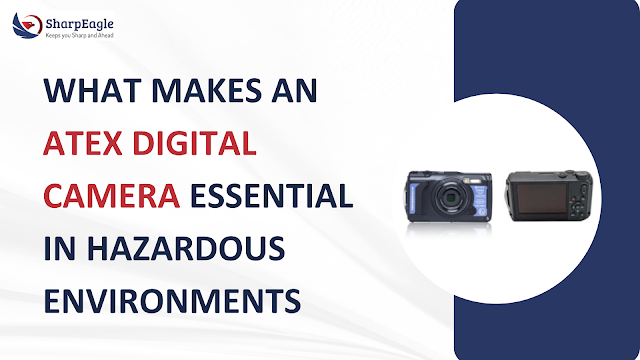How Explosion Proof Lighting Works
In environments where flammable gases, combustible dust, or explosive vapors are present, safety is not just a priority — it’s a necessity. From offshore oil rigs to inland manufacturing hubs, the potential for explosions demands specialized safety measures. One critical safeguard is the use of explosion proof lighting.
But how does explosion proof lighting work? And why is it essential across industries like oil & gas, maritime, logistics, rigs, manufacturing, and more? This guide breaks down the inner workings of explosion-proof lights, types of fixtures, and their real-world applications.
What Is Explosion Proof Lighting?
Despite its name, explosion-proof lighting doesn’t prevent explosions. Instead, it’s engineered to contain any explosion that might originate within the fixture, preventing it from igniting the flammable atmosphere outside. These lights are designed with robust enclosures that absorb internal sparks or flames, ensuring they don’t escape and cause a larger incident.
How Does Explosion Proof Lighting Work?
Explosion-proof lighting fixtures are constructed using heavy-duty materials like aluminum or stainless steel, sealed with heat-resistant gaskets, and often feature tempered glass lenses. Inside the fixture:
- Flameproof housings isolate electrical components
- Pressure-resistant joints prevent sparks from escaping
- Cooling flame paths dissipate heat and flames within the fixture
This engineering ensures that even if a component fails or sparks internally, the flame won’t reach the external environment.
These features make explosion-proof lights ideal for hazardous zones classified under Class I, II, and III or ATEX Zones 0, 1, and 2.
Key Explosion Proof Lighting Types
1. Explosion Proof Flashlight
A handheld essential for inspection teams, especially in the oil & gas, automotive, maritime, and logistics sectors, explosion-proof flashlights are certified for use in flammable environments. Built with non-sparking materials, sealed battery compartments, and rugged designs, these flashlights allow workers to conduct close inspections without compromising safety.
Use cases:
- Inspecting pipelines in offshore rigs
- Navigating dark zones in automobile assembly units
- Emergency use in industrial warehouses
2. Explosion-Proof Emergency Light
During power failures or crisis situations, emergency lighting is critical for safe evacuation. In hazardous areas, it must also be explosion proof to prevent any ignition during a panic situation. These lights are equipped with battery backups, automatic activation systems, and sealed enclosures, ensuring visibility when it’s needed most.
Common in:
- Manufacturing plants with volatile chemicals
- Maritime cargo holds and engine rooms
- Logistics centers storing flammable materials
3. Explosion-Proof Exit Sign
Exit signage may seem basic, but in hazardous environments, even signage can pose a risk if not designed correctly. Explosion proof exit signs use LED technology enclosed in flame-proof, sealed housings. They are often powered by dual circuits and include battery backups for fail-safe visibility.
Applications:
- Oil & gas control rooms
- Chemical manufacturing zones
- Onshore and offshore rigs
Industries That Depend on Explosion-Proof Lighting
1. Oil & Gas (Onshore & Offshore Rigs)
This industry faces constant exposure to flammable gases like methane and propane. Whether in refineries, drilling platforms, or processing stations, explosion-proof lighting ensures safety during routine operations and emergency evacuations.
Typical fixtures:
- Emergency lights in control cabins
- Flashlights for inspection teams
- Exit signs in bunk and machinery areas
2. Industrial Manufacturing
Factories dealing with paint, solvents, chemical processing, and metal works generate combustible dust or vapors. Any spark could set off a chain reaction. Explosion-proof fixtures allow uninterrupted operations without compromising safety.
Popular usage:
- Ceiling-mounted LED lights in hazardous zones
- Explosion-proof emergency lighting in production halls
3. Warehousing & Storage Facilities
Warehouses often store chemicals, fuels, or aerosol products that are highly flammable. Forklifts and mechanical movement increase the risk of friction sparks.
Explosion-proof lighting is crucial in:
- Aisle lighting with dust-proof protection
- Emergency lighting systems near exits and control panels
4. Maritime Industry
Cargo ships, tankers, and offshore vessels store large volumes of flammable cargo. Enclosed, poorly ventilated environments make them particularly risky.
Explosion-proof solutions used:
- Flashlights for ship maintenance
- Emergency lights in cabins and decks
- Exit signs along evacuation routes
5. Automobile Industry
Paint shops, welding stations, and chemical storage in automotive plants present ignition risks. Explosion-proof lighting reduces risk while maintaining high visibility for technicians.
Use cases:
- LED lighting in paint booths
- Explosion-proof task lights in assembly lines
Benefits of Explosion-Proof Lighting
- Prevent ignition of surrounding atmosphere
- Comply with ATEX, IECEx, and NEC standards
- Withstand extreme weather and corrosive conditions
- Enhance worker safety and reduce downtime
- Long life span and low maintenance with LED technology
Final Thoughts
Explosion-proof portable lighting is not just a compliance requirement — it’s a life-saving solution. By preventing sparks or flames from escaping the fixture and igniting flammable materials, it safeguards operations in some of the world’s most hazardous environments.
From handheld flashlights to permanent exit signs, every component plays a critical role in workplace safety. Whether you operate an offshore rig, a busy warehouse, or an automotive plant, installing certified explosion-proof lighting should be part of your safety-first strategy.




Comments
Post a Comment